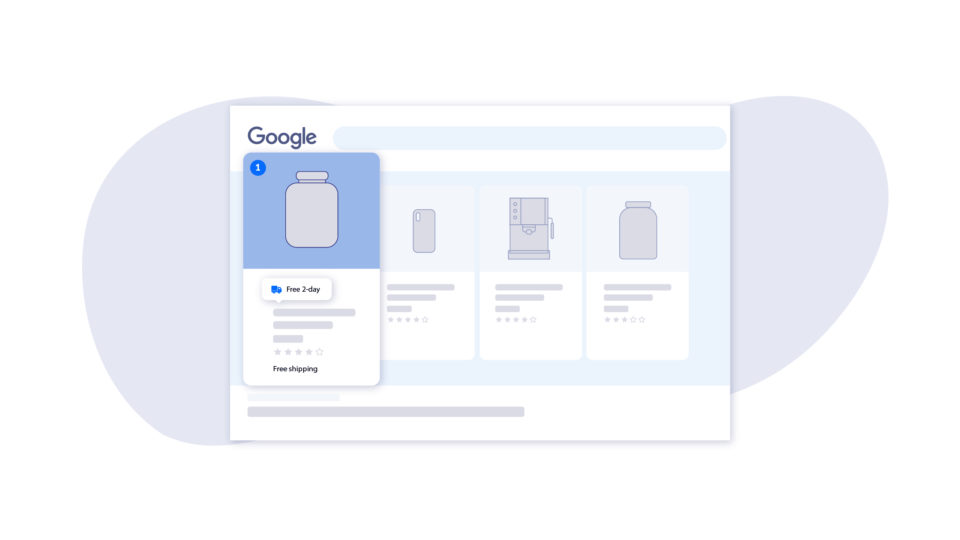

Maximising visibility on free Google Shopping listings is a reliable and cost-effective way to get your product in front of the eyes of potential customers

When customers shop on desktop, free listings won’t look too different from sponsored listings. Google uses several different methods to display free listings depending on the product category. For example, fashion listings will use a large tile size compared to other products, which is great for retailers as you naturally get increased real estate on the screen.
To make a free Google Shopping listing, you must first become eligible to make one. To become eligible to list your products for free on the Google Shopping tab, you must follow Google’s policies and have a structured data markup implemented across all of the product pages of your website.
Handy tip! You can use Google’s Rich Result Test to check if you have structured data and identify areas of improvement or broken schema.
Assuming you have an SEO strategy in place for your website, the optimisations you will need to complete across your product pages will be similar to your current SEO efforts. If your current SEO strategy already addresses optimising product pages though the H1, product title, descriptions, and image attributes, you're already on the right path. Ensuring that the product schema mark-up is correctly implemented, will not only help with text results in search engine results pages, but also on Google Shopping Listings.
Here are the specific aspects of your product pages that should be optimised for free listings on Google Shopping:
Identify target keywords for each of your products through keyword research and incorporate your chosen keywords within your product title. Ideally this reads naturally and a customers won't feel like words are inserted for no reason - Google aims to serve users with the best experience possible, after all.
Continue to incorporate your target keywords in your product descriptions, A product description should ideally be around 150-200 words but keep it to a concise, and accurate reflection of your product that's engaging for a customer to read.
Product details may seem obvious, but it is extremely important to include information on material, fit, colour and anything else you feel is a USP or key detail about your product. Including details such as materials will likely increase your ranking for longer tail keywords or more specific searches themselves nicely to longer tail or more specific searches and increase the number of impressions you receive on your products.
Google always aims to give shoppers the best and most relevant information. Unsurprisingly, they even have their own ways of categorising product information. How a product identifies itself online and off-line is an important part of this info, so make sure you provide a unique identifier (Google prefers GTIN!) for each of your products. Google released an announcement on February 26th 2021 outlining why identifiers are important for providing better product information for users.
This sounds obvious, but product images are a necessity, especially for more visual products or items of clothing. Remember to include a variety of flat lays, model or lifestyle shots of your product on the product page, ensuring that the images are high quality and are appropriately sized so not to slow down the page speed of your product page.
In the back end of your website, pick the most relevant product category or type, for example: ‘men’s outerwear’ or ‘women’s t-shirts’. Doing so will help Google serve your products to the correct audiences and increase the number of impressions your product gets.
The availability of your product is a big factor in whether or not Google will serve your products to users. Product availability should be indicated in the schema markup of your product page and within your product feed.
Effectively use the ProductSchema framework and continue to use Google’s Rich Results Test to ensure there are no errors once your product is live. You can reflect sales or offers on your products using schema and incorporate review ratings. Warnings may be shown if you have not satisfied some ‘optional’ fields within the structured data, but you can pay no mind to these if you cannot/do not wish to provide this information.
We can help you optimise your product pages and product feed and answer any questions you may have on product schema.
Get in touch and speak to a member of our team today!